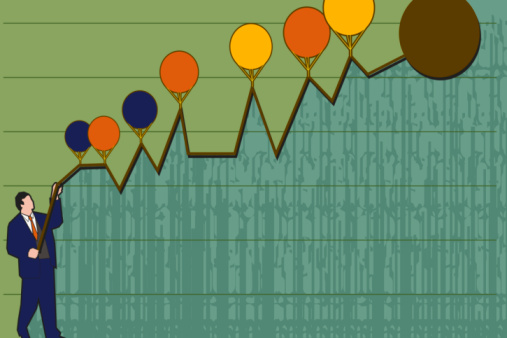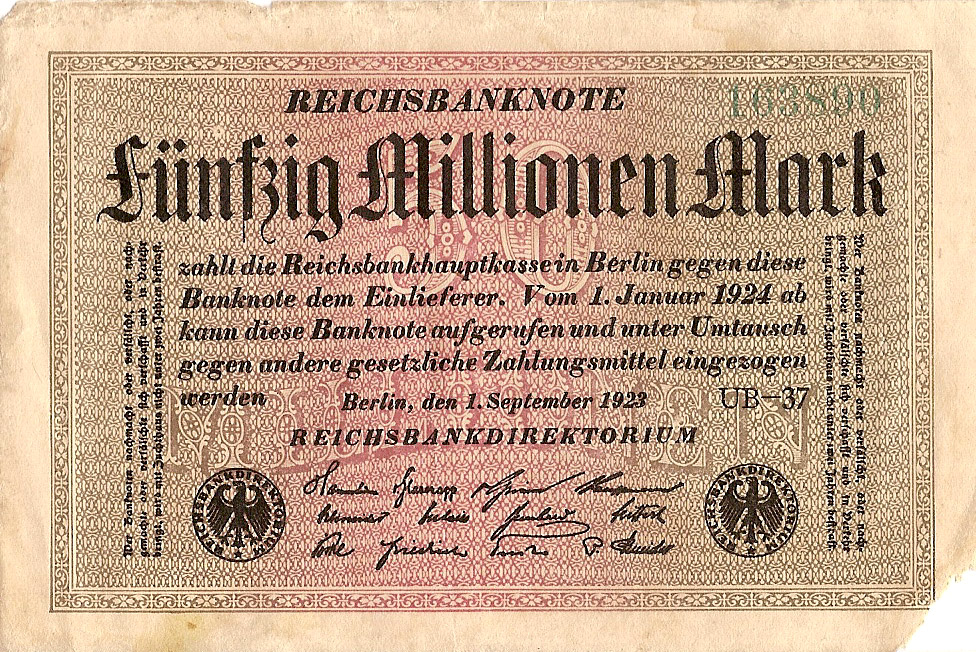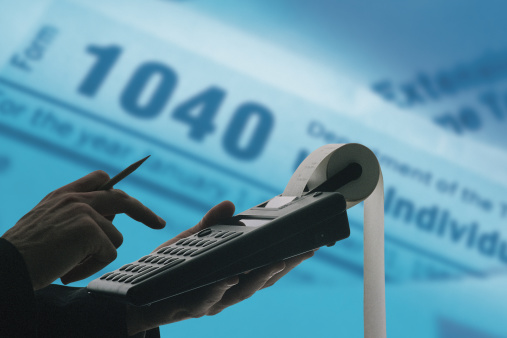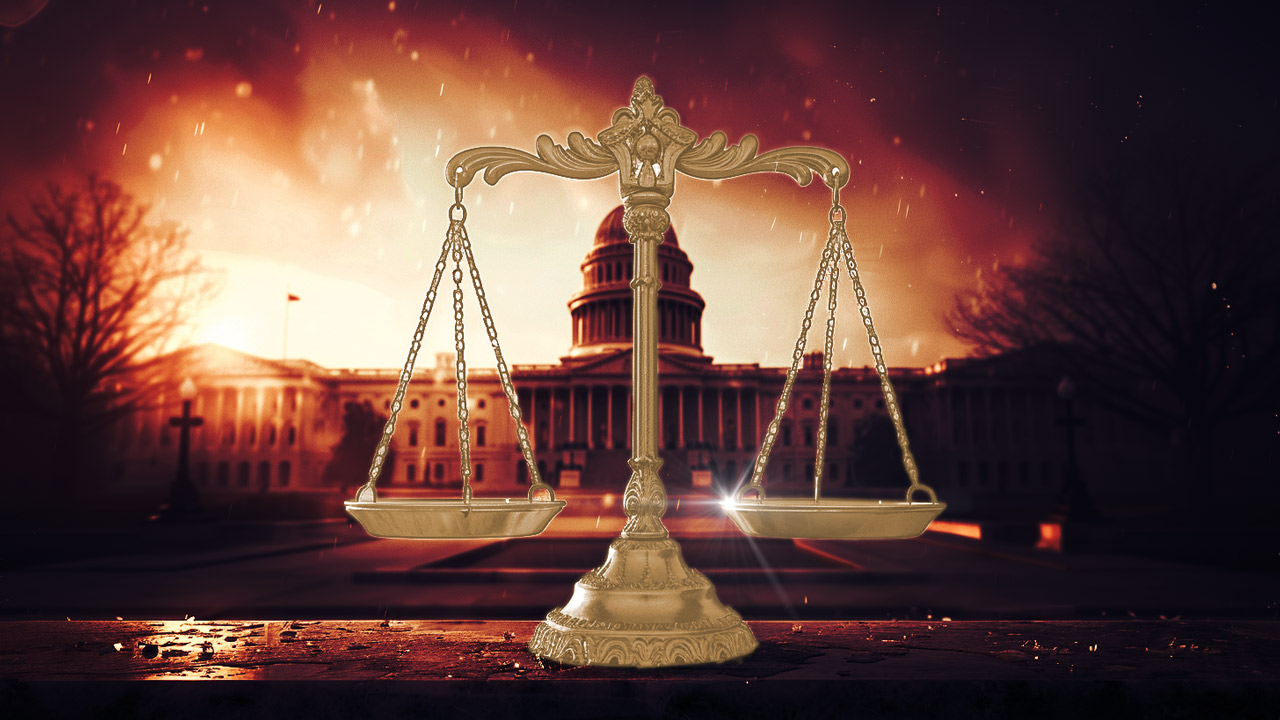What Does Inflation Really Mean?
No other economic concept has created as much confusion and in-fighting among economists as the idea of inflation. Along with its antithesis deflation, they have been the boon and bane of many monetary policy makers, detractors, and admirers for decades.
But what does inflation really mean? How does it affect the average business owner or the average individual? More importantly, how do governments and central banks use inflation to justify their own actions? These are essential questions to understand for anyone interested in making informed decisions to protect their wealth.

“Inflation is when you pay fifteen dollars for the ten-dollar haircut you used to get for five dollars when you had hair.” -Sam Ewing
Inflation Basics: The long and short of it
Most of us already have a basic understanding of inflation. According to Merriam-Webster, the definition of inflation is “a continuing rise in the general price level usually attributed to an increase in the volume of money and credit relative to available goods and services. ” The definition highlights a common assumption by many: that inflation means rising prices. However, inflation isn’t about rising prices; it’s about an expanding money supply. Higher prices are a consequence of inflation, not inflation itself.
While short-term inflation can raise prices and wages and have little detrimental effects to the economy, sustained long-term inflation can be very harmful. If left unchecked, inflation can become hyperinflation, a condition where a fiat currency becomes so diluted, it’s practically worthless. For one, the citizens of hyperinflated economies have the problem of needing so much currency, denominations become ridiculously large and dysfunctional.

50 Million Mark Reichs bank note from the 1920’s
Historical Example
One extreme example of hyperinflation occurred in Germany after WWI when the amount of money in circulation fell dramatically. In response, Germany’s central bank, Reichsbank, began out of control printing. In 1922, the highest denomination was the 50,000 Mark. By 1923, the highest denomination was 100,000,000,000,000 Mark. In December 1923, the exchange rate was 4,200,000,000,000 Marks to 1 US dollar, according to Wikipedia. Buying a loaf of bread would literally take a wheelbarrow full of German Marks.

Inflated Currency, Deflated Savings
The U.S. economic intelligentsia insists on pulling the economy forward on the backs of consumer spending. More money floating throughout the system means more capital investment, higher wages, and larger tax revenues. Investment means more products and services; higher wages mean more demand for those products and services. This all sounds good, but what about saving for the future? Where does that fit into the scheme? It doesn’t. In fact, inflation encourages consumption and discourages saving. Peter Schiff explains:
If you save your money for later, you know it won’t be worth as much later. That means you may as well spend it today before it loses its value. This sounds great to a lot of economists, but it’s actually bad. Savings are the only way an economy can progress. Only with savings does anyone have the capital or the leisure time to make machines, invent something new, or launch companies. So by discouraging saving, steady inflation stultifies economic progress.”
Inflating the Tax Base
Inflation broadens the tax base by eroding investment earnings. Here’s a common scenario: you have an investment that gains you 2% annually, but the inflation rate is at 2.5%. It’s obvious you’re losing money. What’s worse is you are still responsible for paying taxes on that 2% “gain”. Your gains now have become losses and tax liabilities.
As Peter explains, this situation is particularly problematic for capital gains taxes, “where inflation results in phantom gains that generate real liabilities.”
Inflated Egos (aka Central Bankers)
Today, central bankers mistakenly agree the worst thing to befall the economy is the opposite of inflation. Deflation happens as a money supply shrinks with the result of lower prices and wages. According to some economists, falling prices prompt people to postpone purchases because they’re waiting for the bottom to buy. As a result, the economy slows which lowers prices even further, and continues to push people to wait.
The situation is known as a “deflationary spiral” and is seen as the ultimate Evil by Fed officials like Ben Bernanke because it’s at odds to consumption. However, money printing and quantitative easing are temporary fixes that delay the inevitable currency crisis that’s only made worse by interfering with the market.
Of course, this argument doesn’t work in practice because consumers do continue purchasing things like electronics even when they know the price is likely to go down in six months. Why not wait to buy a cell phone later when the price is lower?
Policy makers like Bernanke see artificially inflating the currency as the corrective for deflation as if it were somehow wrong for the price of something to fall. Most things produced over time get cheaper because of the rise in production efficiency. It’s a natural move for prices and wages, so why would governments and central banks want to interfere by artificially increasing the money supply?

Hidden Agendas and More Taxes
Well, as we’ve already seen, inflation broadens the tax base, creating larger revenues for the debt-addicted US government. While some of this increase goes to expanding services, entitlements, and defense, it also goes to service interest on the national debt. Peter explains:
Deflation fears provide an excuse for intentionally causing inflation, which government likes, because it acts as a hidden tax. Also, the U.S. government is the world’s largest debtor, and debtors benefit from inflation because it allows them to pay off their loans with dollars that are cheaper than the ones they borrowed. So, fears about the Great Depression have combined with political ulterior motives to turn deflation into this looming monster in the imagination of many economists, politicians, and writers.”
Fear of default on its debt is what keeps the government (i.e. the Fed) from raising interest rates. If the rate goes up, it will become impossible to service the debt’s interest, which will result in default. Yet keeping interest too low threatens to weaken the US dollar and create hyperinflation. It’s easy to see the precarious situation the US government finds itself and the true motives behind its “data dependent” monetary policies.
Measuring Inflation
The Consumer Price Index (CPI) is the way the Bureau of Labor (BOL) tries to measure inflation. Essentially, the BOL uses the same types of items that make up a common “basket” of products and services with in the market place. However, there are multiple types of CPI’s, ones that include items like food and gas and others that exclude them. You’re probably wondering why common things like food and gas would be excluded. The idea is that the prices of these items are too volatile and fluctuate too much over time. So, the BOL releases the CPI-U for All Items Less Food and Energy or the “core” CPI. The result, when compared to the actual CPI, is that inflation appears lower than it actually is.
Unsurprisingly, the core CPI is what the Fed uses to gauge inflation and justify keeping interest rates lower. Peter explains:
The Bureau of Labor Statistics tweaks the formula for CPI to make inflation appear lower. Government has a vested interest in disguising the true magnitude of inflation, because inflation is a hidden tax on the people.”
Given all of this, it can feel like there’s not much the average person can do to fight against central banks and their over-leveraged governments. But buying gold and silver can help hedge against inflation and deflation because of the stability of its purchasing power over thousands of years.
Get Peter Schiff’s latest gold market analysis – click here – for a free subscription to his exclusive weekly email updates.
Interested in learning how to buy gold and buy silver?
Call 1-888-GOLD-160 and speak with a Precious Metals Specialist today!




 The solution to a problem shouldn’t make the problem worse. But apparently, California’s policy makers missed that memo. On April 1st, the state instituted a $20 minimum wage for fast food workers, the highest in the US. With California’s absurdly high cost of living, the policy appeared to make life more manageable for low-income residents. Unfortunately, as the adage goes, “If it sounds too […]
The solution to a problem shouldn’t make the problem worse. But apparently, California’s policy makers missed that memo. On April 1st, the state instituted a $20 minimum wage for fast food workers, the highest in the US. With California’s absurdly high cost of living, the policy appeared to make life more manageable for low-income residents. Unfortunately, as the adage goes, “If it sounds too […] The monetary battle of the 20th century was gold vs. fiat. But the monetary battle of the 21st century will be gold vs. bitcoin. With Wall Street jumping into the game with bitcoin ETFs, a bitcoin halving recently splitting the block reward for miners in half, and both gold and bitcoin hovering near their all-time highs, it’s a great time for […]
The monetary battle of the 20th century was gold vs. fiat. But the monetary battle of the 21st century will be gold vs. bitcoin. With Wall Street jumping into the game with bitcoin ETFs, a bitcoin halving recently splitting the block reward for miners in half, and both gold and bitcoin hovering near their all-time highs, it’s a great time for […] What is Nvidia? If you’re a committed gamer the question may sound like nonsense. Nvidia, which was founded in 1993, is a tech company that makes GPUs and other products. It originally specialized in making products for the video game industry, that assisted in 3D rendering. If you were a committed gamer, you probably owned their products. If you weren’t, you might not have heard of them.
What is Nvidia? If you’re a committed gamer the question may sound like nonsense. Nvidia, which was founded in 1993, is a tech company that makes GPUs and other products. It originally specialized in making products for the video game industry, that assisted in 3D rendering. If you were a committed gamer, you probably owned their products. If you weren’t, you might not have heard of them. With the AI boom and green energy push fueling fresh copper demand, and with copper mines aging and not enough projects to match demand with supply, the forecasted copper shortage has finally arrived in earnest. Coupled with persistently high inflation in the US, EU, and elsewhere, I predict the industrial metal will surpass its 2022 top to reach a […]
With the AI boom and green energy push fueling fresh copper demand, and with copper mines aging and not enough projects to match demand with supply, the forecasted copper shortage has finally arrived in earnest. Coupled with persistently high inflation in the US, EU, and elsewhere, I predict the industrial metal will surpass its 2022 top to reach a […] America’s trust in its institutions has rapidly eroded over the past 20 years. We have a lower level of trust in our judicial system and elections than most European countries. Some of this is natural, as Americans are uniquely individualistic, but much of it arises from repeated government failures.
America’s trust in its institutions has rapidly eroded over the past 20 years. We have a lower level of trust in our judicial system and elections than most European countries. Some of this is natural, as Americans are uniquely individualistic, but much of it arises from repeated government failures.